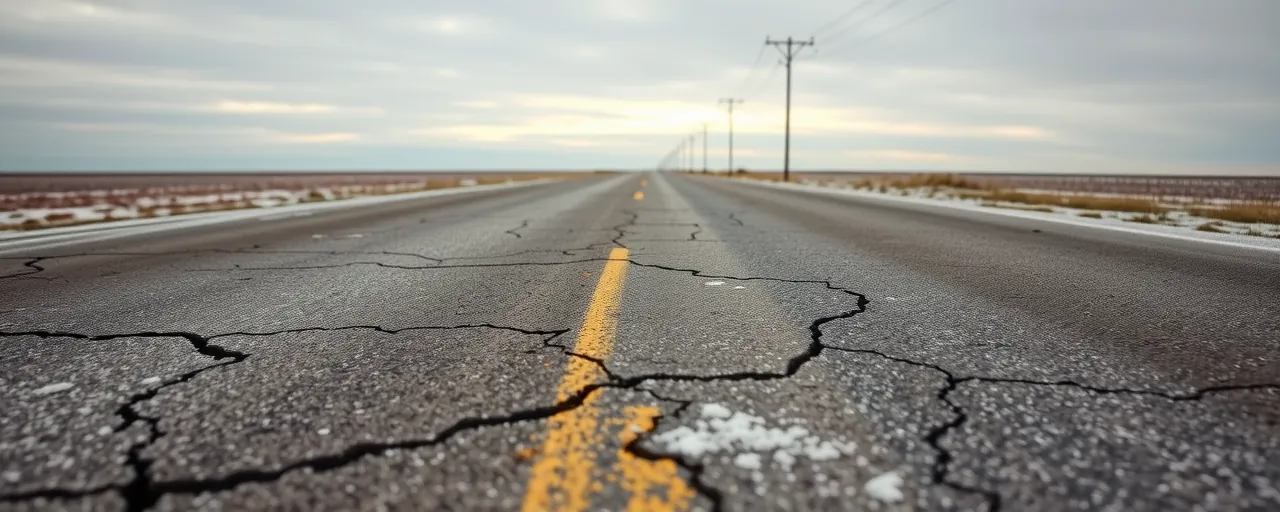A Sudden Shift Grips the Plains
On May 12, 2025, North Dakota sweltered at 100°F, a heatwave that felt like midsummer. By Friday, May 16, forecasts warned of snow in some areas, with temperatures crashing into the 40s and 50s. A powerful cold front triggered this dramatic turn, one of the sharpest 24-hour swings this spring. In Grand Forks, gusts hit 46 mph and highs reached 97°F, only to plummet to the low 50s overnight, leaving residents reeling.
This kind of weather rollercoaster is more than a local oddity. It challenges farmers, strains infrastructure, and raises health concerns. Across North Dakota, people are grappling with the real-world effects of a climate that can flip from scorching to frigid in days, prompting questions about how to prepare for such unpredictable extremes.
Crops Caught in the Crossfire
For North Dakota’s farmers, rapid temperature swings are a familiar foe, but this week’s shift pushes their limits. Early warmth coaxed crops to sprout, only for frost risks to loom by the weekend. Over a century ago, farmers bred tougher wheat, like the 1912 Marquis variety, and perfected dry-farming to conserve water. Now, they use advanced tools: no-till methods, cover crops, and seed coatings developed at MIT that lock in moisture and nutrients. These innovations reduce yield losses by up to 40 percent during heat spikes.
Nationwide, over $10 billion in public and private funds back these efforts. The Agriculture Resilience Act promotes farmer-led solutions, and infrared sensors catch plant stress early. Even so, a Cass County farmer summed up the challenge: “You gear up for heat, then pivot for cold. Every season feels like a roll of the dice.”
Infrastructure Pushed to the Edge
The temperature swing also tests North Dakota’s infrastructure. Heat cuts solar panel efficiency by 0.5 percent per degree and shrinks transmission line capacity. Roads soften, rails warp, and transformers age faster, losing four years of life per degree of sustained heat. Sudden cold snaps, like this week’s, crack asphalt as freeze-thaw cycles take hold. In 2021, heatwaves warped bridges in Portland and Seattle; North Dakota’s roads and utilities now face similar pressures.
Engineers are responding with heat-resistant materials and upgraded cooling for data centers. Rural areas, however, often lack the budget for such fixes. A Bismarck planner explained, “Our systems were built for a different era. Keeping up with today’s extremes is a constant battle.”
Health Systems Brace for Impact
Sudden weather changes hit public health hard. Heat-related deaths among older adults have climbed 167 percent since the 1990s, and urban heat islands drive up hospitalizations during hot spells. Cold snaps, like the one forecast, spark respiratory and heart issues. Wildfire smoke, now more frequent, boosts hospital admissions by 10 percent per fire-week. Warming also expands the range of diseases like dengue by 10–25 percent.
Fargo’s hospitals are gearing up for both heat and cold effects this week. Lessons from the 1995 Chicago heatwave, which claimed over 700 lives, have spurred early-warning systems and heat action plans. Rural clinics, though, often lack resources to fully protect vulnerable groups like the elderly.
Bridging Divide on Climate Solutions
Weather extremes like this week’s fuel varied perspectives on climate. Many Democratic voters, with 78 percent viewing climate change as a major threat, tie these swings to human activity and support policies like the Inflation Reduction Act’s renewable energy investments. Republican voters, however, often focus on practical fixes. Only 14 percent see warming as a personal concern, but many back measures like stronger infrastructure or drought preparedness when pitched as weather resilience.
Despite differences, resilience unites both sides. Young conservative groups, such as the American Conservation Coalition, advocate market-driven solutions, while progressive voices push for public investment. A Grand Forks local captured the sentiment: “Forget the why—just help us deal with what’s coming.”
Building for Tomorrow
This week’s weather in North Dakota highlights a growing reality: extreme swings are reshaping daily life. Farmers innovate, engineers redesign, and hospitals adapt, but the speed of change is daunting. Climate models predict more volatility, with daily shifts rivaling long-term warming as a driver of extreme events.
Communities are doubling down on practical solutions—hardier crops, sturdier grids, and better health preparedness. These steps cut through disagreements, focusing on shared goals. A Fargo official put it bluntly: “We’ll debate causes another day. Today, we need crops to grow and power to stay on.”
The path forward requires ingenuity and collaboration. North Dakota’s experience shows that while weather can change in an instant, resilience, built through collective effort, can anchor communities against whatever lies ahead.
